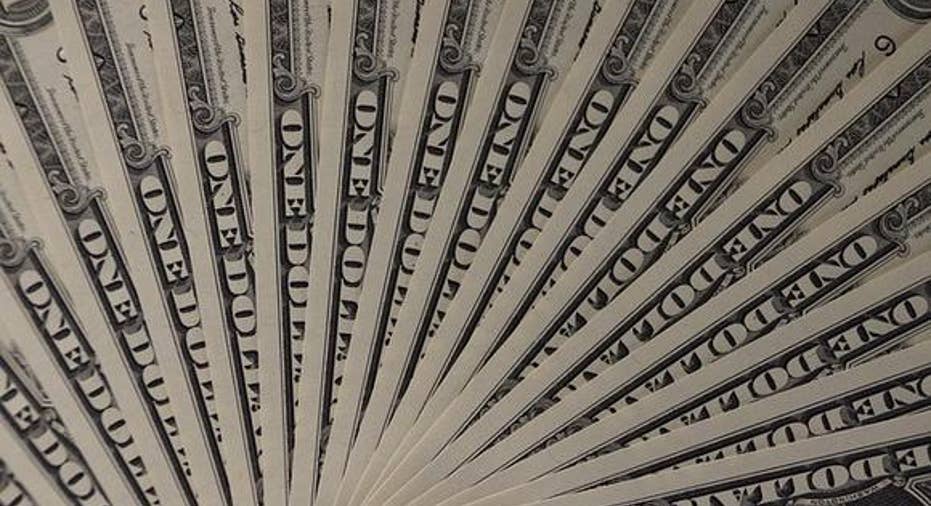How to Make the Most of Your Tax Refund

While most of us don't exactly look forward to tax season, getting a refund can make an otherwise stressful time considerably less harrowing. In 2015, the average tax refund was about $2,800, which is by no means a small amount of money. No matter the size of your refund this year, here's a quick step-by-step guide that'll help you put it to good use.
Image source: Pixabay.
1. Build your emergency savingsMost Americans have less than $1,000 in savings. If you're one of them, the first thing you should do with your tax refund is build up an emergency fund. Ideally, you should have at least three months' worth of living expenses saved up, including enough money to cover things like housing costs, transportation, groceries, utilities, and healthcare. If you have dependents and a mortgage, you should aim even higher, socking away enough cash to cover six months' expenses or more. You never know when you might fall victim to injury, illness, or job loss, so having some emergency savings is the best way to protect yourself and your family financially.
2. Pay off bad debtStill carrying a credit card balance? Use your tax refund to pay if off. Not only can bad debt wreck your credit, but it can end up costing you countless dollars in interest fees, which is basically akin to throwing money away. Imagine you owe $2,000 on a credit card with a 14% interest rate. If you pay off your balance over the course of a year, you'll lose over $150 to interest charges. Use your refund to pay it off immediately, and you'll have an extra $150 on hand to save, invest, or spend on something more important.
3. Save for retirementIf your goal is to retire in a reasonably comfortable fashion, be prepared to pay for it yourself. You'll need a good 70% of your pre-retirement income to maintain a similar lifestyle in retirement, and even if Social Security comes through by the time you retire, those monthly benefit checks are still only designed to cover about 40% of your living expenses. The earlier you start saving for retirement, the more time you'll give your money to grow, so if you've been falling behind on your 401(k) or IRA, use your refund to do some catching up. For 2016, you can contribute up to $18,000 to a 401(k) and $5,500 to an IRA. And if you're 50 or older, that limit increases to $24,000 for a 401(k) and $6,500 for an IRA.
4. Chip away at good debtIf you don't have any bad debt and your emergency and retirement savings are well on track, use your refund to pay down some of your good debt, like your mortgage or student loans. While it's true that these monthly payments won't damage your credit and tend to carry much lower interest charges than credit cards, you're still paying interest nonetheless. Even a small lump sum payment can help shorten the life of a student or home loan and save you money on interest. Say you've got a $10,000 student loan balance at 5% interest to pay off over 10 years. Make a $1,000 lump sum payment right away, and you'll shorten your loan by over a year and save a good $600 in interest charges.
5. Start investingIf you've been eager to start investing but haven't had much disposable income on hand with which to do so, now's your chance to take advantage. Invest your tax refund wisely, and your return might be enough to pay for that vacation, furniture set, or home improvement you've been trying to save for. Say you get a refund of $2,800 and you buy stock that generates an 8% average annual return. Even if you don't add a dime more, over the course of three years, if the market performs its average, you'll grow your balance to over $3,500.
Tempted as you may be to view your tax refund as free money and spend it all on something fun, remember this: Tax refunds come as the result of overpaying taxes throughout the year. In other words, that money you're getting back is not by any means "free." It's money you earned but failed to collect up front, so rather than treat it as found money, be sure to use it responsibly.
The article How to Make the Most of Your Tax Refund originally appeared on Fool.com.
Try any of our Foolish newsletter services free for 30 days. We Fools may not all hold the same opinions, but we all believe that considering a diverse range of insights makes us better investors. The Motley Fool has a disclosure policy.
Copyright 1995 - 2016 The Motley Fool, LLC. All rights reserved. The Motley Fool has a disclosure policy.